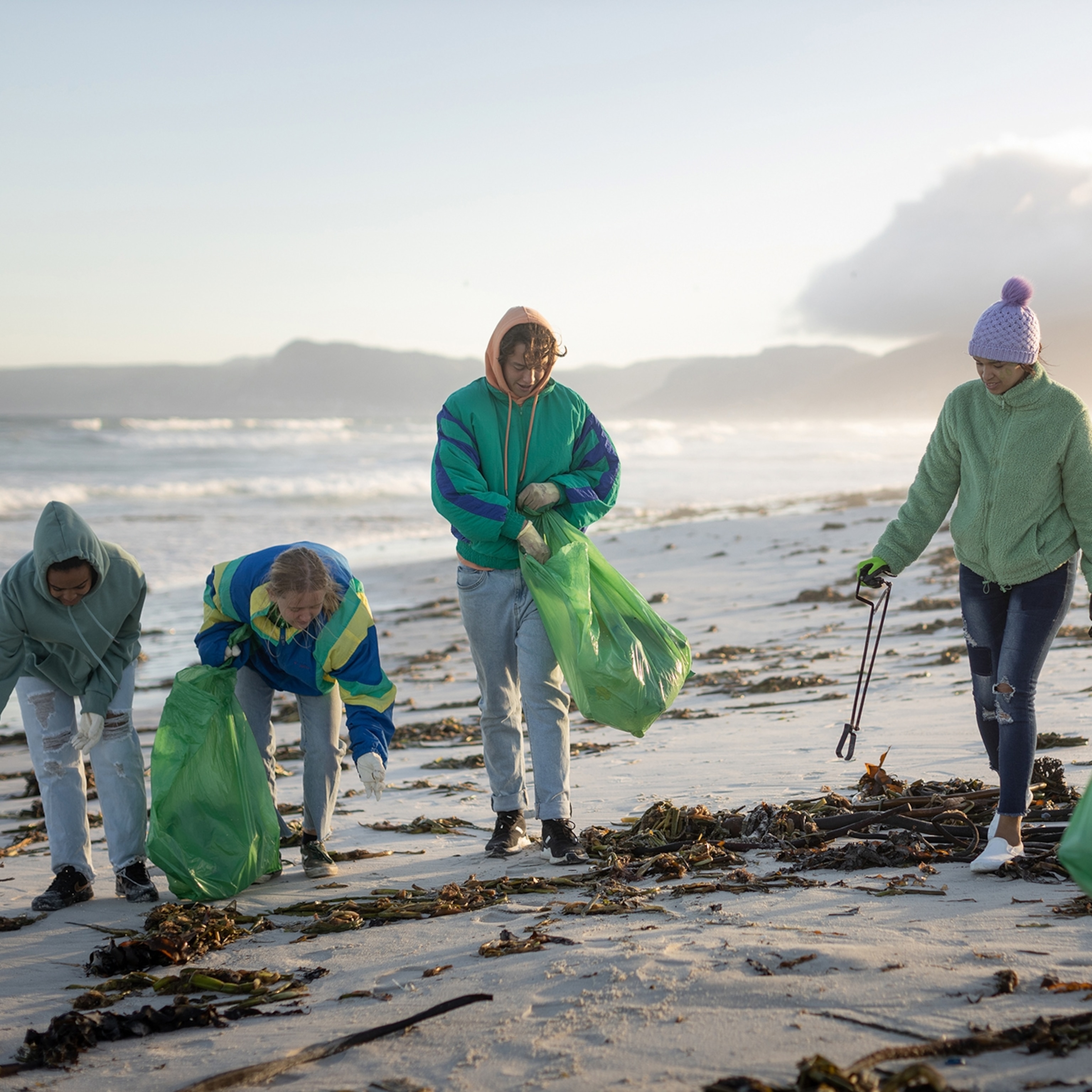
Traveler of the Year: Alison Wright
A disaster is the catalyst for transformation
THE CHANGE AGENT
“I’m always striving to find compassion in the face of chaos,” says photojournalist Alison Wright. Her mantra was pushed to the max following a deadly bus accident on a remote jungle road in Laos. “Our bus swerved on a mountain road and was sheared in half by a logging truck. Those around me were killed, but I was pulled off the burning bus. It was humbling to realize that at that moment it didn’t matter how many credit cards I had.”
Wright survived, thanks to villagers who never left her side, doctors on two continents, and 30 surgeries, but her brush with mortality brought an epiphany. “Until I dipped my toe into the other side, I had never truly fathomed how connected we actually are,” she says. “The accident brought new empathy to my work. I realized that making a photo was not enough. I needed to do more.”
Three years after the tragedy in Laos, she returned to the village that saved her life with five doctors and $10,000 worth of medical supplies. It was her first foray as founder of the Faces of Hope Fund.
“It’s important to show solutions as well as problems,” says 50-year-old Wright, who is based in New York City but spends most of the year on the road. Her foundation has supplied tents to Haiti after the 2010 earthquake, sent girls to school in India, funded children’s health programs in the Middle East, fueled a mobile medical unit for Burmese refugees in Thailand, and supported girls endangered by sex trafficking in Nepal. One thing she never forgets: “I’m alive today because of the kindness of strangers.”
—By George W. Stone
THE INTERVIEW
National Geographic Traveler: How did you get the courage to hit the road?
Alison Wright: My parents gave me the wings to fly. My British Mom was a stewardess for Pan Am, so I believe I got my wanderlust in utero. I have memories of sitting on the pilots’ laps in the cockpit, watching the fluffy white clouds below. My Belgian dad always encouraged travel as part of my education. I’m just not sure he intended my education to go on for this long. Mom used to take my younger brother and me to the airport and we’d sit on the hood of the car eating straps of licorice watching the planes take off as a recreational activity. I loved the smell of jet fuel.
NGT: When did you start taking pictures?
AW: I got my first little point and shoot camera when I was ten and loved to take photos. I was 15 and working on the high school yearbook and school newspaper when Mr. Lee, my English teacher, took me aside and told me that I could actually make a living as a photojournalist. From the first time I heard that word I knew what I wanted to do with my life. And I’ve never wavered.
NGT: How have you evolved as a photographer?
AW: I always wanted to create change through my camera. Early on, I became very involved with refugees through my work with Unicef, Save the Children, and Oxfam. When I began shooting the book Faces of Hope for Unicef, I related that phrase to my subject matter: children. But I’ve come to realize that “faces of hope” are also the people who are out there starting their own innovative projects to find the solutions to the problems they encounter. The Sally Struthers days are over, focusing on children with flies on their eyes and outstretched hands. Images like that can make the world’s problems feel so overwhelming. People are more inspired if you show hope, and present a solution to the problem.
NGT: How did your disaster change you?
AW: At the time of my accident in Laos, I was already doing a lot of social documentary/humanitarian photography. This experience of coming back from the brink has brought a whole new depth to my work and also reconfirmed that I was on the right path. Through my photography I strive to create global awareness, and through my foundation, the Faces of Hope Fund, to give back in some small way to the communities that I photograph.
NGT: Who are your own “faces of hope”?
AW: People like my friend and idol, Olga Murray, who founded the Nepal Youth Foundation. At 88 she still works tirelessly running orphanages in Nepal and has almost singlehandedly stamped out girls being sold into bonded labor in western Nepal by giving piglets to families so they can sell their piglet at the end of the year instead of their girl children. Which is a sad statement to what a girl is worth.
NGT: What drives you?
AW: I find happiness to be fluid. The feeling of being alive is not always one of happiness—there’s sadness, there’s melancholy, there’s fear. But then there’s compassion. Nothing touches me more deeply than compassion. So how do we make that connection and how do you make it last? How do you make people care? To me, it’s the idea of sharing hope. That’s what draws me to humanitarian work.
NGT: How can travelers help?
AW: If you’re just here on Earth and don’t travel and see how other people are living, you’re not really living. Travel puts a face to a place. It helps you make a connection and start to care. And travel brings a whole new appreciation for how good we have it. I believe that travelers do want to help the communities that they visit; one way is to channel the spirit of philanthropy through travel.
NGT: What’s your ultimate goal?
AW: My goal is to search for compassion in what can seem to be a world of chaos. Since we’re privileged enough to have the unique opportunity to step into the worlds of others, my goal is to inspire thinking about how we can help better the lives of others.
NGT: What’s your best travel advice?
AW: Keep your senses aware and your heart open. And have medevac insurance.
>> Read the Next Travelers of the Year Interview
You May Also Like
Go Further
Animals
- How can we protect grizzlies from their biggest threat—trains?How can we protect grizzlies from their biggest threat—trains?
- This ‘saber-toothed’ salmon wasn’t quite what we thoughtThis ‘saber-toothed’ salmon wasn’t quite what we thought
- Why this rhino-zebra friendship makes perfect senseWhy this rhino-zebra friendship makes perfect sense
- When did bioluminescence evolve? It’s older than we thought.When did bioluminescence evolve? It’s older than we thought.
- Soy, skim … spider. Are any of these technically milk?Soy, skim … spider. Are any of these technically milk?
Environment
- Are the Great Lakes the key to solving America’s emissions conundrum?Are the Great Lakes the key to solving America’s emissions conundrum?
- The world’s historic sites face climate change. Can Petra lead the way?The world’s historic sites face climate change. Can Petra lead the way?
- This pristine piece of the Amazon shows nature’s resilienceThis pristine piece of the Amazon shows nature’s resilience
- Listen to 30 years of climate change transformed into haunting musicListen to 30 years of climate change transformed into haunting music
History & Culture
- Meet the original members of the tortured poets departmentMeet the original members of the tortured poets department
- Séances at the White House? Why these first ladies turned to the occultSéances at the White House? Why these first ladies turned to the occult
- Gambling is everywhere now. When is that a problem?Gambling is everywhere now. When is that a problem?
- Beauty is pain—at least it was in 17th-century SpainBeauty is pain—at least it was in 17th-century Spain
Science
- Here's how astronomers found one of the rarest phenomenons in spaceHere's how astronomers found one of the rarest phenomenons in space
- Not an extrovert or introvert? There’s a word for that.Not an extrovert or introvert? There’s a word for that.
- NASA has a plan to clean up space junk—but is going green enough?NASA has a plan to clean up space junk—but is going green enough?
- Soy, skim … spider. Are any of these technically milk?Soy, skim … spider. Are any of these technically milk?
Travel
- Dina Macki on Omani cuisine and Zanzibari flavoursDina Macki on Omani cuisine and Zanzibari flavours
- How to see Mexico's Baja California beyond the beachesHow to see Mexico's Baja California beyond the beaches
- Could Mexico's Chepe Express be the ultimate slow rail adventure?Could Mexico's Chepe Express be the ultimate slow rail adventure?






